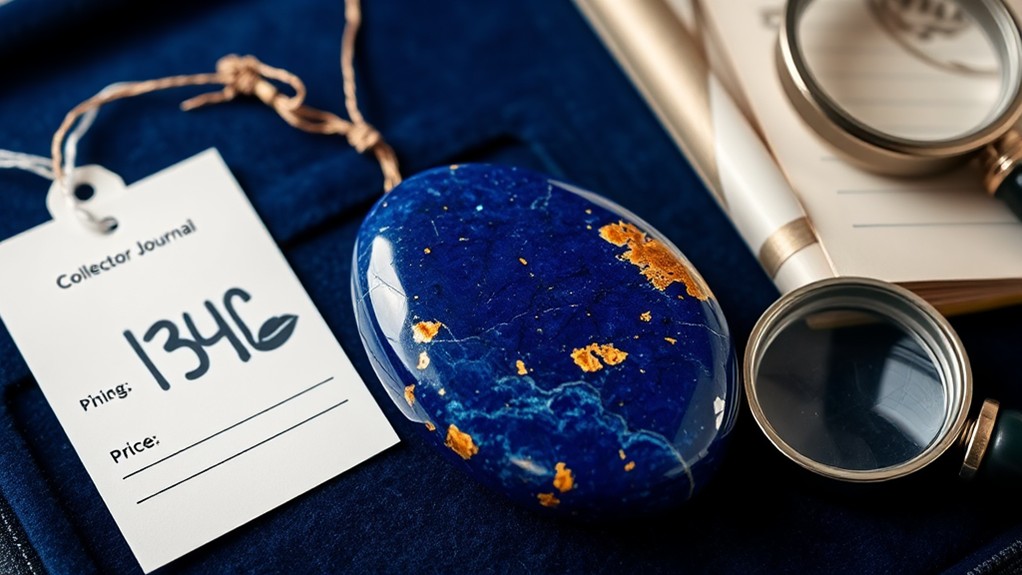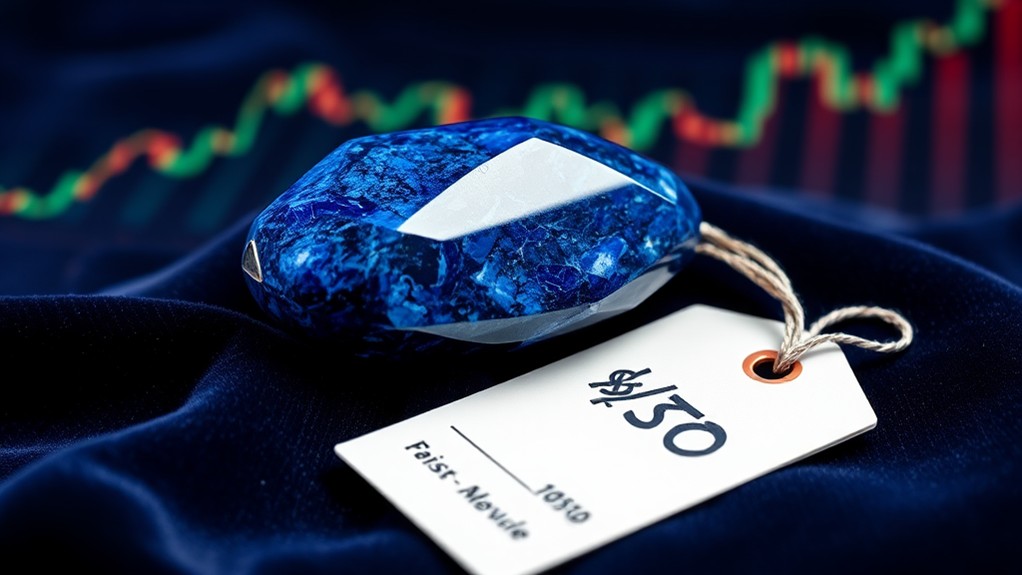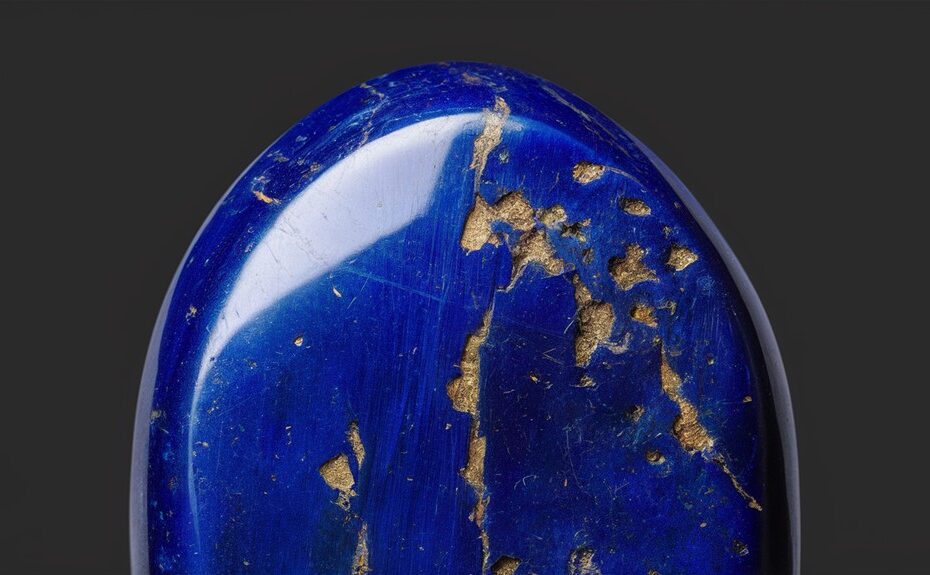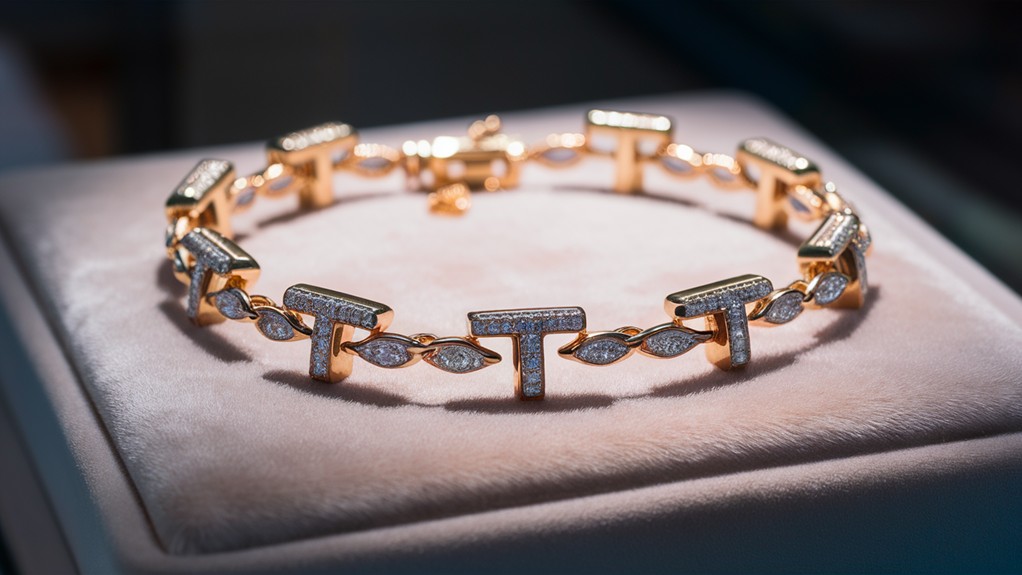If you're considering adding a piece of lapis lazuli to your collection, you're likely wondering what factors determine its value. The worth of this ancient blue stone can vary greatly, with prices ranging from a few dollars to hundreds of dollars per carat. But what sets a high-quality lapis lazuli apart from a lower-grade one? And how can you be sure you're getting a fair deal? The answer lies in understanding the complex interplay of factors that influence lapis lazuli's value – and that's where your path to uncovering the true worth of this coveted stone begins.
Our Highlighted Points
- Lapis lazuli value is primarily determined by its deep blue color intensity and quality.
- Royal blue hue with minimal inclusions is particularly valuable, especially in larger stones.
- Price of lapis lazuli can range from $1 per carat to $100-$150 per carat or more for superfine material.
- High-quality Afghan lapis lazuli, particularly from the Sar-e-Sang deposit, is considered the most valuable.
- Market trends, supply, and demand can fluctuate, affecting the value of lapis lazuli over time.
What Is Lapis Lazuli

When you think of lapis lazuli, chances are you're picturing a deep blue stone flecked with golden pyrite.
This blue gemstone is, in fact, a metamorphic rock composed of lazurite, pyrite, and calcite. Lazurite gives lapis lazuli its characteristic deep blue color, while pyrite adds a touch of golden sparkle.
The presence of calcite, conversely, can affect the stone's aggregate appearance.
Lapis lazuli forms through contact metamorphism over millions of years, resulting in a unique and complex composition.
The best quality stones are mined in Afghanistan's Badakhshan Province, a region that has been a significant source of lapis lazuli for over 6,000 years.
To identify genuine lapis lazuli, look for an even, intense blue color with small flecks of pyrite and minimal white calcite veins.
The stone's hardness of 5-6 on the Mohs scale and isotropic crystal system with uneven fracture additionally distinguish it from other gemstones.
Understanding the composition and formation of lapis lazuli is vital in appreciating its unique characteristics and value.
Lapis Lazuli Quality Factors
Several key factors determine the quality and worth of lapis lazuli.
When evaluating high-quality Lapis Lazuli, you should consider its color, pattern, and presence of inclusions.
A deep blue color, often referred to as vibrant blue or intense blue, is highly prized by collectors.
Genuine lapis with a royal blue hue is particularly valuable, especially if it has minimal inclusions or white calcite veining.
The ideal color for lapis lazuli is a blue with minimal pyrite or white calcite.
Natural Lapis Lazuli with an even, consistent color is more desirable than those with splotchy or uneven colors.
Valuable ultramarine lapis lazuli is characterized by an intense, even blue color.
Key characteristics of high-quality lapis lazuli include:
- Deep blue color with minimal inclusions or white calcite
- Even, consistent color pattern
- Presence of pyrite or gold flecks, which can add value
- Minimal veining or white calcite
When evaluating the quality of lapis lazuli, look for these characteristics to determine its value and worth.
Lapis Lazuli Price Guide

You've evaluated the quality of lapis lazuli based on its color, pattern, and inclusions, now it's time to put a price tag on it.
The Lapis Lazuli Price Guide reveals that the value of lapis lazuli can vary greatly. The price of lapis lazuli can range from $1 per carat for lower-grade stones to $100-$150 per carat or more for superfine material.
Several factors contribute to the Lapis Lazuli Value, including its color intensity.
Deep blue with violet tones is the most valuable, while white calcite inclusions can lower the value. Conversely, golden pyrite inclusions can augment the value in the eyes of collectors.
The size of the lapis lazuli rough also impacts its value and desirability, with larger, high-quality stones being rarer and more valuable.
Key factors that affect the Lapis Lazuli Price include:
- Color intensity: Deep blue with violet tones is the most valuable.
- Inclusions: White calcite lowers the value, while golden pyrite amplifies it.
- Size: Larger, high-quality stones are more valuable.
Fine Lapis Lazuli with a polished surface and intense color can command a high price.
Buying and Caring Tips
Inspecting Lapis Lazuli
Before making a purchase, inspect the lapis lazuli cabochons for any streaks or patches that may indicate it's real or fake.
A lapis lazuli buying guide can provide valuable information on how to identify genuine lapis.
Caring for Lapis Lazuli
To care for your lapis lazuli, avoid exposing it to harsh chemicals or extreme temperatures.
Clean your lapis lazuli with mild soap and water, and dry it thoroughly to prevent damage.
Avoid using ultrasonic cleaners or steam cleaners, as they can damage the stone.
Market Trends and Value

When evaluating the value of lapis lazuli, you'll find that its worth is largely determined by its quality.
High-quality lapis lazuli, characterized by a deep blue color and fine grain, can command the highest prices. The finest lapis lazuli from Afghanistan, particularly the Sar-e-Sang deposit, is considered the most valuable, with prices reaching up to $100-$150 per carat or more at retail.
Market trends and geopolitical factors can additionally impact the value of lapis lazuli.
Ongoing demand in jewelry and decorative arts has driven the market for years. However, supply and demand can fluctuate, affecting the value of lapis lazuli. For example, the size of lapis lazuli rough can impact its value and desirability, with larger, high-quality stones being rarer and more valuable. Additionally, the availability of lapis lazuli from certain mines or regions can also influence its worth. In recent years, there has been an increase in interest and demand for lapis lazuli jewelry, particularly in the form of statement pieces and unique designs. For those interested in purchasing or investing in lapis lazuli, consulting a reliable selling pearl guide can provide valuable insights into market trends and pricing.
Lower grades: less than $1 per carat
Mid-range: $10-$50 per carat
High-quality: $50-$100 per carat
Finest quality: $100-$150 per carat or more
Frequently Asked Questions
How to Price Lapis Lazuli?
When pricing lapis lazuli, you'll consider its color intensity, uniformity, and inclusions. Factor in polish quality, cutting artistry, and the stone's size. Research similar stones, and consult with experts to determine a fair value.
What Color Lapis Is Most Valuable?
You're looking for the most valuable color of lapis. Typically, a deep, vibrant blue, often called "royal blue" or "electric blue," is considered the most valuable on account of its rarity and intense color.
What Does Good Quality Lapis Lazuli Look Like?
When you're looking for good quality lapis, you'll notice it has a deep, rich blue color with flecks of gold pyrite that resemble stars, and a smooth, even texture with minimal inclusions or imperfections.
How Can You Tell if Blue Lapis Is Real?
To verify if blue lapis is real, you check its color, hardness, density, polish, and reaction to UV light. It should have a deep blue color, scratch glass, feel heavy, have a smooth polish, and fluoresce pale yellow or orange.


